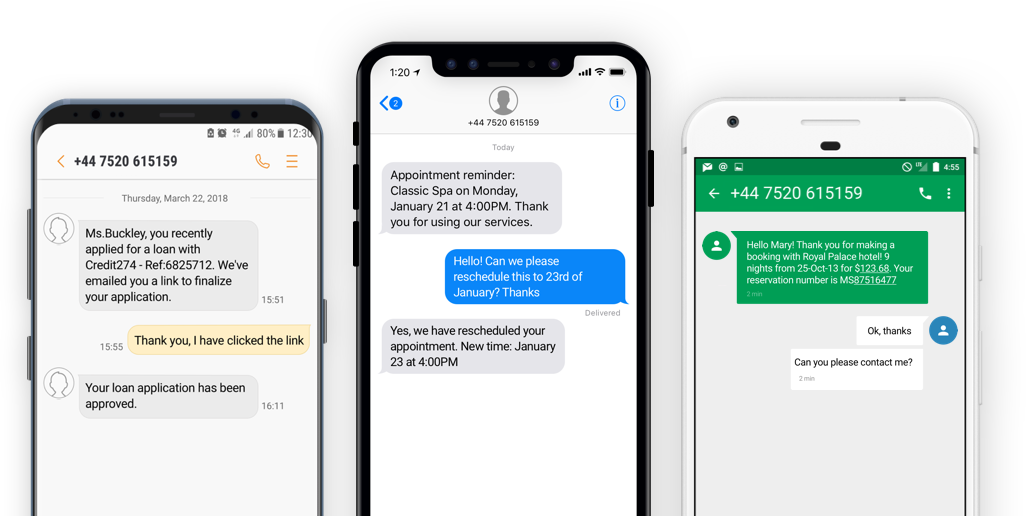
- #SEND SMS FROM WEBSITE API HOW TO#
- #SEND SMS FROM WEBSITE API FULL#
- #SEND SMS FROM WEBSITE API PASSWORD#
These are transmitted to the mobile handset in an escaped format, and consequently use 2 7-bit The GSM-7 standard also defines an extended character set containing the following characters: A standard GSM-7 message contains up to 140 bytes, which Symbols and is suitable for English and most West-European languages.Įach GSM-7 character uses 7-bits. It contains the more commonly used letters, accented forms and GSM-7 is the standard character set for sending SMS messages and is supported on GSM networksĪnd mobile handsets globally. GSM-7 is the default character encoding used, if unspecified in the API request. The character encoding used also dictates the maximum length of a SMS text message and therefore can also affect the cost of an SMS message The character encoding you should use depends on the language and symbols you need to send in the SMS message. Unicode is implemented at the mobile network level as UCS-2 and enables the transmission of a broader range of languages and richer content to mobile phones. GSM-7 defines the standard alphabet which is mandatory for mobile networks and GSM mobile handsets (all mobile phones with a SIM card).

The GSM-7 and Unicode character encoding standards are supported for sending SMS text messages. The message delivery status is returned in the XML response parameter. Note: this value is left blank if the delivery time is not When the message was received by the mobile phone The date and time from the delivery receipt confirming The date and time the message was submitted to the
#SEND SMS FROM WEBSITE API FULL#
See below for full list of submission status codes returned Status DELIV = Message successfully delivered. The submitted mobile number (international format). Unique message id set by the Mobile networks. The subject of Unicode and GSM7 encoding is explained inĬontainer element for the response status elements, this is repeated for each mobile in the batch. Included or is set in the past, then the message will beĠ = GSM7 - Send as GSM-7 message (default)ġ = Multi-Lingual - Send as Unicode SMS messageĢ = Auto-detect - Send as Unicode SMS messageĪutomatically if non-GSM-7 characters detected. Set the date and time to send the message, if this is not Numeric – max length 15, Alphanumeric – max length 11 Number – for inbound SMS the sender must be set to a The sender can be set to a name or a mobile phone The name shown on the recipient mobile handset as the

Remove the ‘+’ sign and any leading zeros when usingĪ UK number can start with ‘07’ or ‘447’. Target mobile phone number – mobile numbers are listed Parameters are used with templates to enable dynamic Set the template Id instead of sending message text.Ĭontact Cosmic support to set up a template The XML header specifies the version and character-encoding of the message. In the following example the encoded authentication string is shown in red.Īuthorization: Basic R2VvZmZyZXk6QWJDMTIzRGVGNDU2 The encoded authentication string is then added to the HTTP header for all API requests. Online tools are available to help, one example can be found at. This authentication string is required to be Base64 encoded.
#SEND SMS FROM WEBSITE API PASSWORD#
For example, if your user name is ‘Geoffrey’ and your password is ‘AbC123DeF456’, then your authentication string is: Geoffrey:AbC123DeF45 The account username and API password are concatenated with a colon ‘:’ separator to produce an authentication string.
#SEND SMS FROM WEBSITE API HOW TO#
This section describes how to connect to the Cosmic REST API and the authentication requirements.Īll Web API requests are authenticated using Basic Access authentication.


 0 kommentar(er)
0 kommentar(er)
